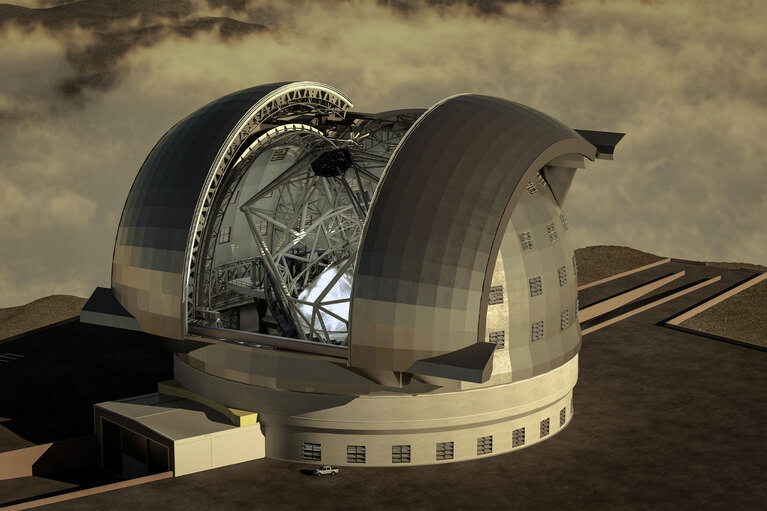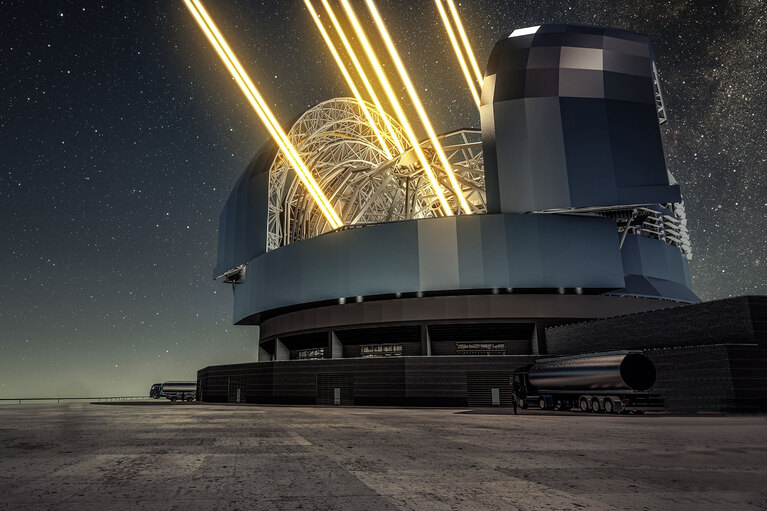
How ReVolt leverages Vicor technology for carbon-neutral film production
Vicor’s power converters to provide clean, mobile, and always-on electricity
Microgate and Vicor are overcoming complex technical challenges (wave-front aberrations) to achieve new levels of deep space visibility. Learn how power dense modules are supporting new discoveries in space.
In the heart of the Chilean desert, on Cerro Armazones, two technological leaders, the American Vicor and the Italian Microgate, are joining forces to create the largest ground-based optical telescope ever built, the Extremely Large Telescope (ELT). This engineering feat, thanks to high-density power systems and revolutionary adaptive optics, promises to peer into the universe with unprecedented clarity.
With a primary mirror 39 metres in diameter, the ELT promises to revolutionize observational astronomy, allowing us to peer into the depths of the Universe with unprecedented clarity.
This feat is made possible by a collaboration between Vicor, a US company specializing in high-density power modules, and Microgate, an Italian company based in Bolzano, a leader in adaptive optics control systems. Together, they are developing advanced technological solutions to overcome the challenges posed by terrestrial astronomical observation.
Figure 1: Microgate telescope.
One of the main obstacles in astronomical observation from the ground is represented by atmospheric turbulence, which distorts the light coming from celestial objects. To overcome this problem, the ELT is equipped with an adaptive secondary mirror, called M4, with a diameter of 2.4m and a thickness of only 1.9mm. This mirror is controlled by 5,316 voice-coil linear motors, which deform its surface in real time to compensate for atmospheric aberrations, ensuring extremely sharp images.
To function properly, the adaptive optics system requires a precise, efficient, and compact power supply.
Microgate chose the Vicor DCM3623 series DC-DC converter modules known for their high-power density and reliability. Each module can power up to 36 motor channels, reducing wiring complexity and improving system thermal management.
The synergy between Vicor and Microgate represents a virtuous example of international collaboration in the field of high technology.
Thanks to this partnership, the ELT will be able to observe the universe with unprecedented precision, opening new frontiers in understanding cosmic origins. As Gerald Angerer, hardware engineer at Microgate, stated: "Vicor's high-efficiency, high-power-density modules are very compact and reliable, and take up very little space on the circuit board. We've been using them for more than 10 years, and there's currently no comparable replacement."
With the ELT, humanity takes a significant step toward understanding the universe, thanks to the ingenuity and collaboration of companies like Vicor and Microgate.
This article was originally published by Electronica AV.
Case study: World's largest telescope is helping unlock the origins of the Universe
Powering Innovation eBook: Volume 3 – Changing what’s possible
Article: Vicor power modules enable Microgate’s adaptive optics to bring the universe into focus
Innovation power: Meeting modern day challenges with high-density solutions
How ReVolt leverages Vicor technology for carbon-neutral film production
Vicor’s power converters to provide clean, mobile, and always-on electricity
Helping Hollywood fulfill its green ambitions
ReVolt is the cleaner, greener solution to the massive fossil fuel burning generators used on movie sets today. Learn how Vicor is helping ReVolt
Accelerate your move to a high performance 48V power delivery network
This eBook provides guidance on designing 48V power delivery networks to enhance the performance, efficiency, and reliability of industrial products
16th Asia Power Technology Development Forum 2025
Vicor presented high-density DC–DC power modules maximize ATE throughput







